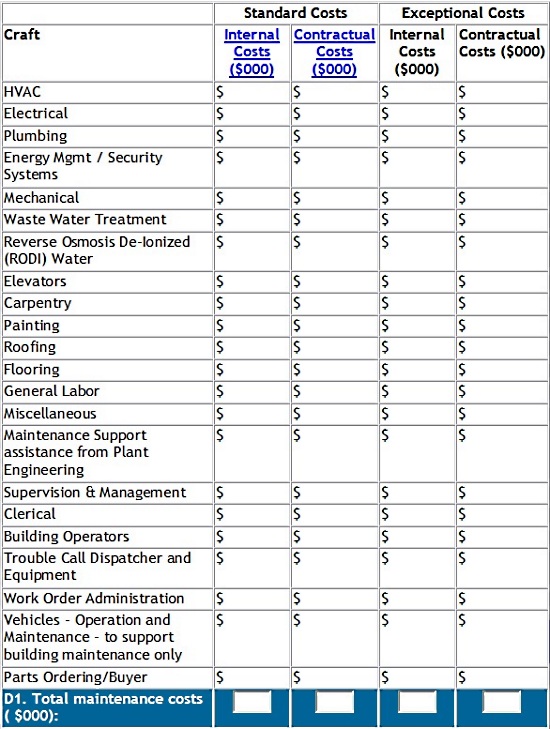Program For Preventive Maintenance

Preventive maintenance task schedules: Developing an effective preventive maintenance program requires more than generating preventive maintenance tasks, and CMMS systems have the tools to make important improvements. Preventive maintenance schedules empower users to coordinate labor resources and parts needed to complete work, as well as. A Preventative maintenance program (PM) is defined as maintaining plant and equipment assets on a regularly scheduled basis in order to mitigate future breakdowns and equipment failures which would otherwise result in unnecessary production interruptions and unexpected repair costs. Preventive maintenance software is one of the most important features that any CMMS software can offer an organization. Without a scheduled preventive maintenance program, routine equipment checks go overlooked for critical facility and production equipment. Preventive maintenance program is scheduled weekly, fortnightly, monthly, quarterly, half-yearly or yearly as applicable to all equipments. Engineering department will be responsible for scheduling tracking and excusing of preventive maintenance program.
EQUIPMENT MANAGEMENT PREVENTATIVE MAINTENANCE PROGRAM LOSS PREVENTION UNIT OFFICE OF RISK MANAGEMENT DIVISION OF ADMINISTRATION OFFICE OF THE GOVERNOR. Implementing a maintenance program that minimizes the adverse impact of boiler/machinery and other equipment failures. UTSA Preventive Maintenance Program Page 5 of 13 program log. The workbook is updated as new equipment or tasks are rewritten or created in the program with the latter file stored in an archive subfolder. Preventive Maintenance programs, whether written or stored on a Computerized Maintenance Management System, should also include a list of resources necessary to perform work, such as scissors lifts, forklifts, drills, wrenches, etc. A job plan should provide information on job scope, crafts, and hours to allow the supervisor to assign.
A well-executed preventative maintenance schedule results in reduced breakdowns and cost savings. Many organizations--with noble intentions--develop or hire-out preventative maintenance programs and schedules, only to file them away within a few months. Like any tool, the tool itself is worthless unless properly utilized in the right way.
A preventative maintenance—or PM—schedule begins to formulate once a few gaps in information are filled. Timing, as well as the tasks, is crucial for carrying out an effective PM plan. In order to determine the timing and tasks, the following information is necessary.
Create a register of all assets such as buildings, vehicles and equipment. Group the list in systems and subsystems. For example, list each structure or building individually. Next, list the associated systems that are common to all the buildings. Examples of included systems are air conditioners, lighting systems, plumbing and communication systems. Subsystems, or individual components, might include individual air conditioners, specific lighting panels, certain boilers, and the like.
Prioritize assets by degree of importance or criticality. Equipment or system failures that would directly affect safety, operational performance, or comfort and convenience, will rank accordingly. Systems affecting safety of personnel are the highest priority. The plan should be created for these systems first--before moving on to less critical equipment.
Perform life cycle and replacement cost analysis on all assets based on their priority. The life cycle cost includes the initial purchase, labor and parts, expended toward the asset over its entire useful life. Forecasting future costs is possible based on historical cost and the asset’s rate of deterioration. Replacement cost of each asset is essential in determining the amount of time and money to invest toward its preventative maintenance. For example, a $20 dollar telephone is not worth a $30 dollar per hour electrician to inspect or repair.
Engage the entire staff in the development of the preventative maintenance schedule as early as possible. Allow the technicians and staff—those who execute the schedule—to be involved in its development. This conveys a sense of ownership and creates stakeholders whom now have an interest in the PM plan and schedule succeeding.
Constantly monitor asset performance once the schedule is put into practice. Tracking the number of breakdowns—and what broke—will help analyze the schedules effectiveness. After a few months, scheduling adjustments are needed based on current asset performance trends. Some task intervals will be extended, while others will be shortened. Continuously monitoring and correcting the PM schedule ultimately results in a best-in-class PM program.
Program For Preventive Maintenance Training
Start with equipment manufacturer recommendations for preventative maintenance as a minimum.
Assign numbers to all assets included in the PM schedule for improved tracking purposes.
Preventive Maintenance Program Pdf
- Schlegelfotos/iStock/Getty Images
